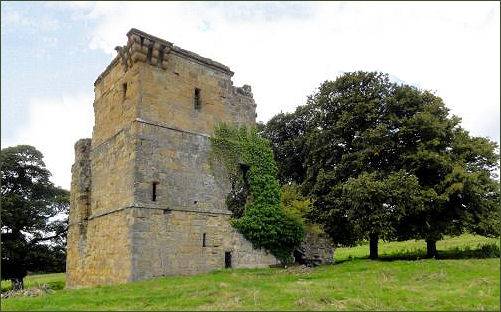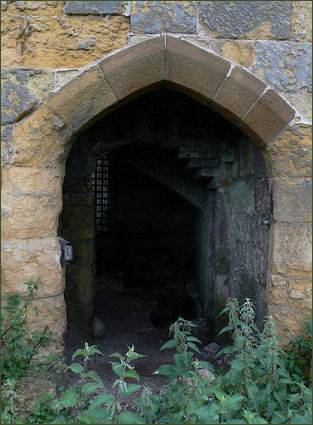Ayton Castle
OS grid reference:-
 Historic Ayton Castle stands on the edge of a plateau just to the north of the village of West Ayton in the North York Moors National Park.
Historic Ayton Castle stands on the edge of a plateau just to the north of the village of West Ayton in the North York Moors National Park.
 The castle dates back to the late fourteenth century and was built by Sir Ralph Eure, as a typical Northern tower house. Ralph Eure hailed from Northumberland, but married the heiress Katherine de Ayton.
The castle dates back to the late fourteenth century and was built by Sir Ralph Eure, as a typical Northern tower house. Ralph Eure hailed from Northumberland, but married the heiress Katherine de Ayton.
The first building to occupy the site was built by William de Aton, the nearby village of Ayton is named after the family. In the thirteenth and fourteenth centuries, the north of England was regularly attacked by Scottish raiders or English Border Reiver families. After the Battle of Bannockburn, the victorious Scots reached as far south as Yorkshire and almost certainly attacked the thirteenth century house on the Ayton Castle site.
Ralph Eure set about building an improved building which would be more effective against any future Scottish raids. He based his design on a Pele (pronounced peel) Tower which was a common defensive dwelling of the day along the Scottish Borders and in his native Northumberland, but rarely built this far south.
The surviving ruins of Ayton Castle rise to their full height at one corner and enough survives of the structure to provide an insight into the castle's original layout. The tower once stood three stories high. There were two rooms on the ground floor. The original entrance was on the north-west end wall, and opened into the kitchen. From there stairs led up to the first storey hall, and then up to the top floor. At the opposite end of the hall stood another flight of stairs, which provided the only access to the other ground floor room.
The first floor probably contained a single great hall, with bed chambers or a solar on the top floor. There are corbels on the surviving top corner, suggesting that there was a square turret or similar structure at each corner, connected by a wall-walk which ran along behind battlements. The castle was a built using well-shaped ashlars and with decorative string courses on the outer walls. It has been speculated that John Lewyn, the master mason of Bolton Castle, may have been involved in the construction of Ayton Castle.
It would have been originally surrounded by a high defensive wall which provided the first line of defence to the tower, and which in times of danger offered refuge both to the resident family and to the local community who worked the de Aton's land. The villagers would herd their animals inside and help defend the Pele in return for shelter by their landlord.
The castle was leased, then sold, and by 1680 was unoccupied. Stone from the castle was later used to build the bridge over the Derwent between the villages of West Ayton and East Ayton. William, Lord Eure, still owned a house in West Ayton in 1569, but it appears to have fallen into disrepair fairly soon after this date.
The remnants of the inner and outer bailey ramparts stand to the east, with the grass covered foundations of an inner gateway and traces of fishponds. Excavations have also revealed the remains of a dovecote.
Directions
Ayton Castle is located west of West Ayton, off Castle Rise. 35 miles north-east of York. The site is visible from a public footpath, which passes the castle from Castle Rise.
